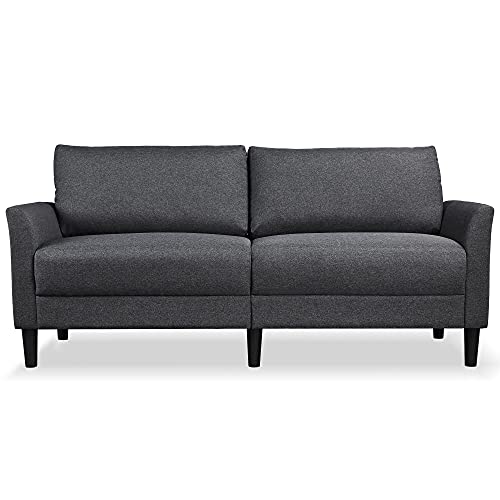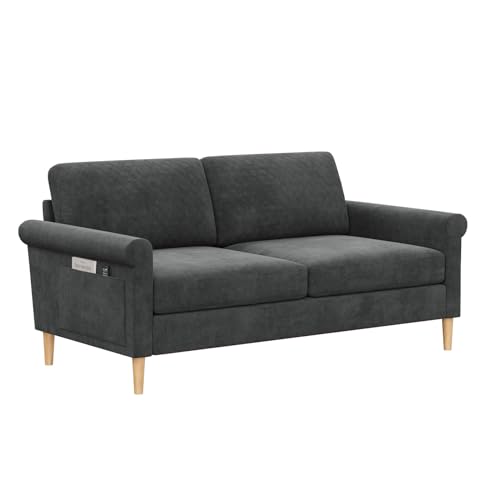Guide To 2 Seater Leather And Fabric Sofa: The Intermediate Guide Towa…
페이지 정보

본문
 Choosing Between a 2 seater leather and fabric sofa (Read the Full Post)
Choosing Between a 2 seater leather and fabric sofa (Read the Full Post)It can be difficult to choose between leather and fabric when you are searching for a new sofa. This is especially relevant if you're new to furniture experience.
If you have children or live in apartments the leather option could be the best choice for you. It is easy to clean and looks stunning in a lot of homes.
Comfort
A sofa is the focal element of the majority of living areas and is a major purchase. You want one that is comfortable to lounge on for hours, looks great, fits with your decor and can last for a long time. The decision between fabric or leather can be confusing It is crucial to evaluate your needs as well as your lifestyle and budget prior to making a choice.
Leather is a premium material with a luxurious feel and radiates class in a home. It is tough and stain-resistant, it is insensitive to pets and children, and will last for a long time if given proper maintenance. It can be costly initially and may require regular conditioning to avoid cracking or peeling.
small fabric 2 seater sofa sofas are available in a wide range of styles, colours and fabrics and can be a more affordable choice than a leather one. They are also more comfortable and more cosy, and can be "broken in" right from the beginning. They are susceptible to dust mites and pet hairs, and may require more frequent cleaning. There are now hypoallergenic fabrics and new technologies that are available.
The durability of a sofa made from fabric will depend on the quality of the fabric, but most fabrics will last up to 15 years if they are properly cared for. Regular vacuuming and deep-cleaning will ensure that the fabric is free of stains, odours and dirt. They also can flatten and sag over time, just as leather. Additionally, many couches made of fabric have been treated with chemical to make them stain-resistant and flame retardant. These chemicals can release volatile organic compounds that could alter indoor air quality and cause allergies.
Durability
When buying sofas, we usually choose fabrics that are incredibly durable, as this is crucial for those with pets and children. You don't want to pay much upfront and then end up with buyer's remorse after the first spill or claws that are crowbarred. In the same way you don't want to buy something that's cheap 2 seater fabric sofa but can't withstand daily use.
Leather is also extremely durable and has a remarkable tear strength. It can also last up to four times longer than fabric, and is naturally resistant to fading, cracking and flaking over time. It can also be treated to replenish its natural oils, and look as good as new.
Fabrics are more affordable and come in a variety of colors, patterns, and textures that can be tailored to any interior design scheme. They are also less difficult to clean than leather and can withstand a fair amount of wear and tear, but they do tend to be more prone to moisture and suffer from fading in time.
Microfiber is a good option for durability and can be found in a wide variety of colors, however it's not as tough as genuine leather and may not be able to take the punishment of scratches. But, it's an excellent choice for families due to of its resistance to spills and stains, and it is easy to clean typically with a damp cloth.
Suede however is a challenge to maintain clean and can be more difficult to repair than leather. It is prone to lose its shape and feel rough if it is not regularly maintained. It's also a very thin substance, so it may not be as strong as sheepskin or cowhide leather.
Allergens
The fabric the sofa is constructed of can have a big impact on your allergies, so it's important to understand how different options hold up. Fabrics tend to retain allergens like dust mites, pet dander, and mold that can cause symptoms of allergies like rhinitis, hay fever, asthma and eczema. This is because these fabrics act as an ideal environment in which they can thrive.
The leather, however is not a source of allergens and provides a consistent level of comfort, regardless of the season. It can also trigger skin irritation in those who suffer from contact dermatitis or are allergic to the chemicals used in tanning. Utilizing vegetable-tanned leather and ensuring an active skincare routine is crucial to reducing skin reactions.
Sofas made of fabric and leather offer a high degree of durability, however the type of fabric you choose will determine how long it will last over time. A good quality fabric will stand up to daily use without sagging or fading and can endure spills and body oils effortlessly. Modern sofas have stain-resistant treatments that make cleanup easy.
Although you may not be able to stop an allergic reaction from the leather on your sofa, it is possible to avoid allergens by having a lint roller close by and regularly vacuuming your living space. This can help reduce the amount of dirt, pet hair and dust mites that build up on your sofa. If you're still suffering from allergies, try replacing your sofa for a more allergy-friendly model. For example, a leather sofa made of synthetic or vinyl is less likely to collect dust mites and pet dander, and can help you breathe more easily.
Scratches
It is important to think about the amount of wear you can anticipate for a leather couch. The finish, colour and quality of the leather are all important aspects in how long a couch will last. Also, you must ensure that it is sturdy enough to stand up to spills and other accidents. This can be achieved by choosing a couch with a solid wood frame and high-density foam cushions.
Leather can be scratched for many reasons, such as stretching and marking the territory or reliving stress. Scratches can be of various severity. They can range from minor surface scratches, to deep cuts or punctures. Minor scratches can be fixed with a leather conditioner. This will restore the balance between moisture and oil within the leather, and stop it from drying out or cracking. Deep scratches and cut may require a different approach according to the extent of damage.
If you have cats, it's a good idea to trim their nails regularly as this can assist in stopping them from scratching your couch. You can also stop your cat's scratching habits by providing them with alternatives scratching surfaces, such as cardboard or sisal rope. Another option is to use a pet-safe furniture polish which can be applied using an abrasive cloth to the damaged area.
In addition to cleaning your leather sofa regularly, it's recommended to keep it from the direct sun and other sources of heat, as this can dry out the leather. This can cause it to crack, which is usually difficult to repair and frequently requires reupholstery. It is recommended to use a conditioner for leather to keep the leather soft.
Smell
Leather couches can smell different than fabric. It's because it's more porous and will absorb unwanted odors such as smoke, body odor or food very easily. The good thing is that odors usually dissipate with time, especially when you use a non-toxic and fragrance-free cleaner.
 If the smell is overwhelming, it could mean that something is wrong with the foam. This is usually caused by chemical off-gassing resulting from petroleum-based polyurethane. If this is a problem then seek out couches manufactured with CertiPUR US certified or natural latex.
If the smell is overwhelming, it could mean that something is wrong with the foam. This is usually caused by chemical off-gassing resulting from petroleum-based polyurethane. If this is a problem then seek out couches manufactured with CertiPUR US certified or natural latex.Another method to detect fake leather is to look for bumps or a rough texture on the back of the sofa. This is a sure sign that it's bonded instead of genuine top grain leather. You can also perform a visual check by laying the sofa over and looking for any exposed upholstery backing. If you are able to smell it, then it's likely a synthetic material, such as polyurethane or polyester. These materials will have a different scent than leather.
While a leather couch is more susceptible to picking up smells, the most effective way to avoid this is to clean regularly your sofa. This keeps it looking good and smelling great and also prevent it from becoming stiff or cracked over time. Start by vacuuming and dusting the couch before wiping it down with a dry cloth and baking soda (a good natural way to eliminate smells). It is recommended to do this at least every small two seater fabric sofa weeks or more in order to get rid of any dirt and dust build-up. Then, apply a leather conditioner to preserve your sofa's color and texture.
- 이전글From Around The Web Here Are 20 Amazing Infographics About Auto Accident Lawyer Near Me 24.12.05
- 다음글What Asbestos Attorneys Will Be Your Next Big Obsession? 24.12.05
댓글목록
등록된 댓글이 없습니다.